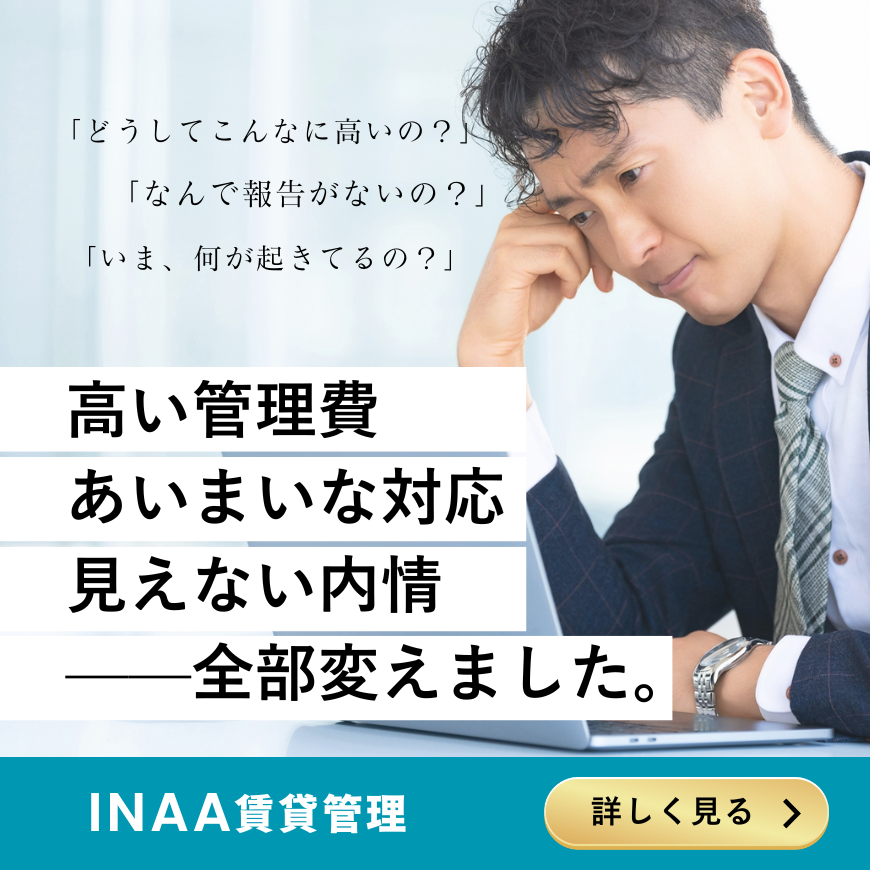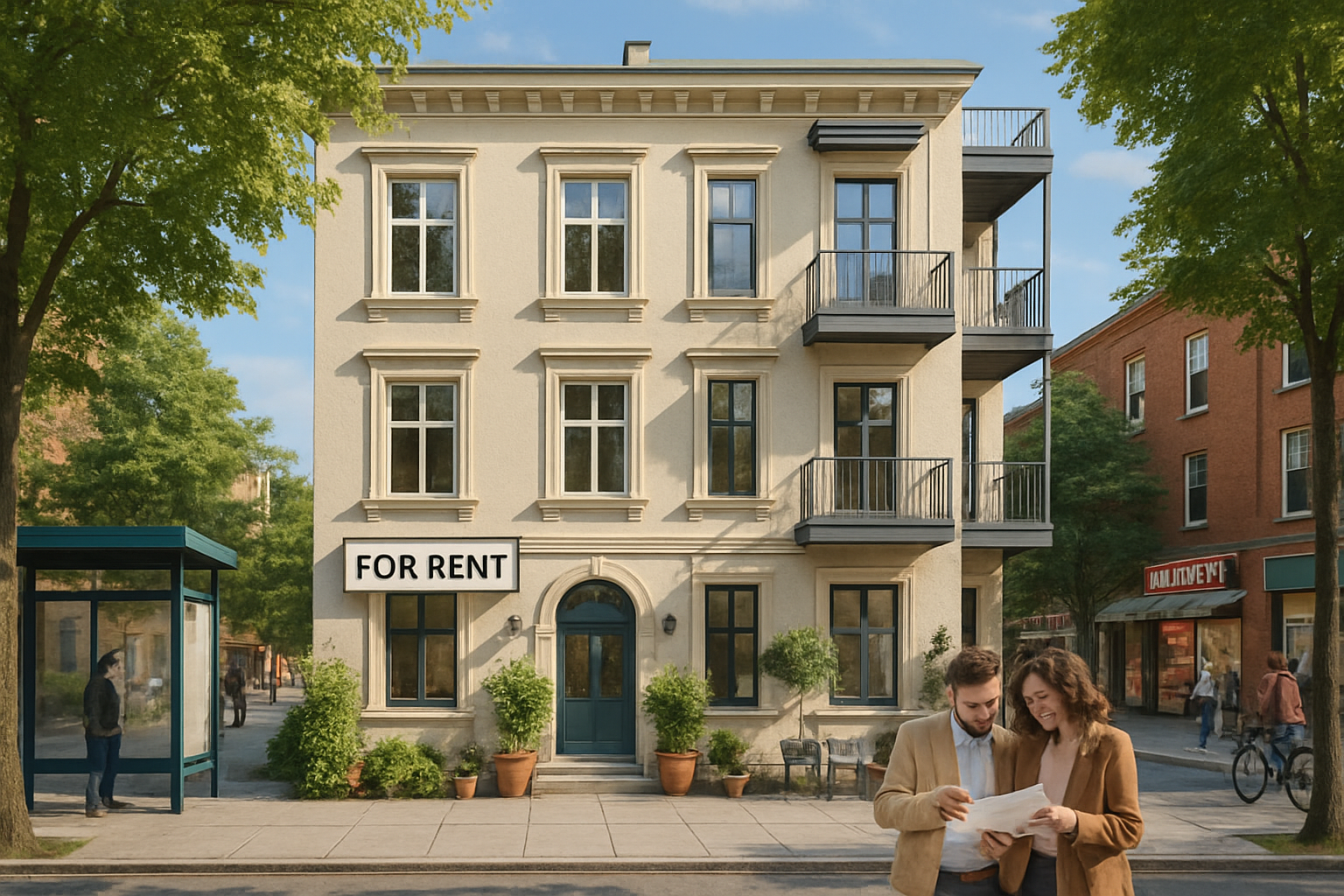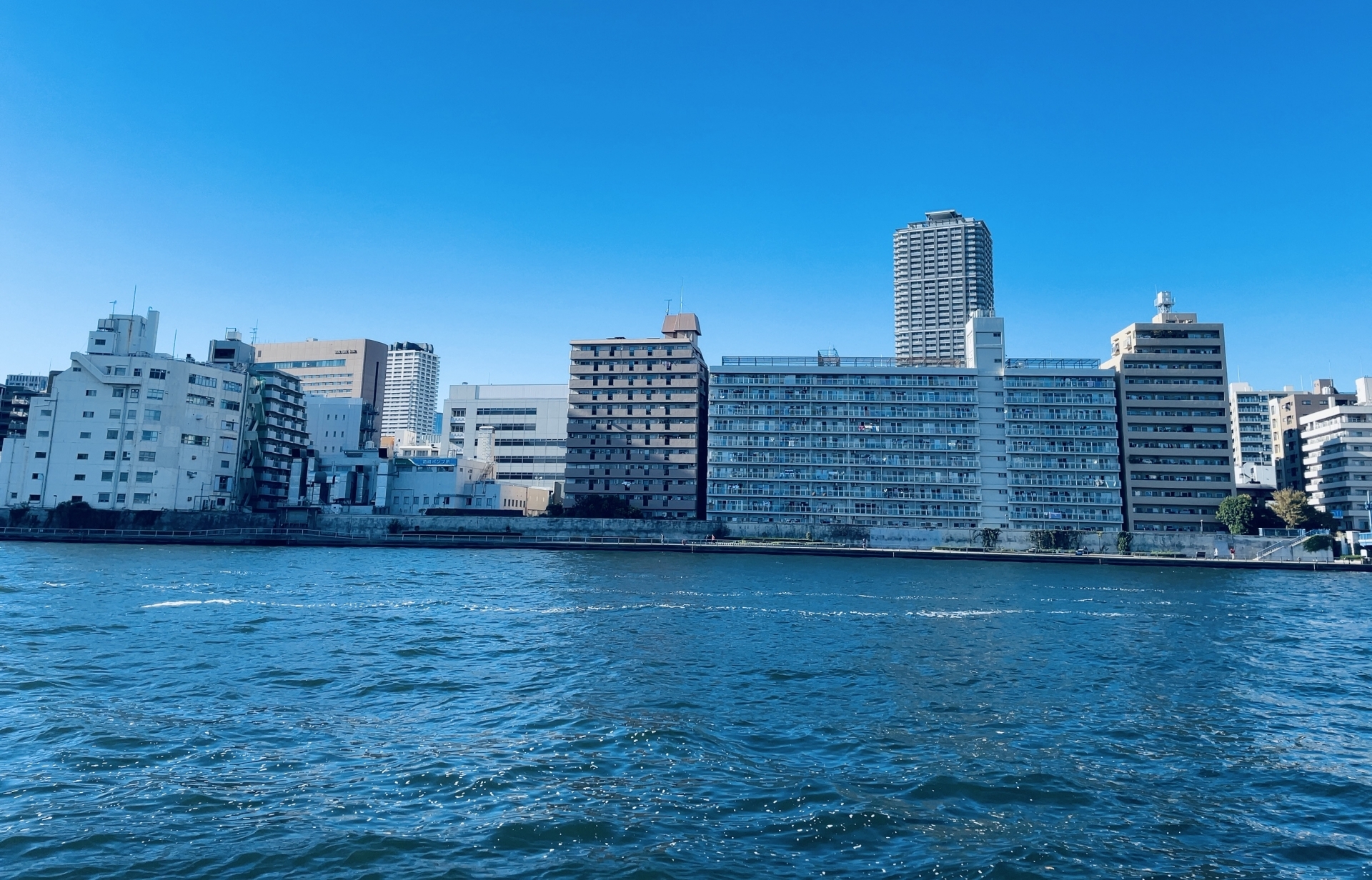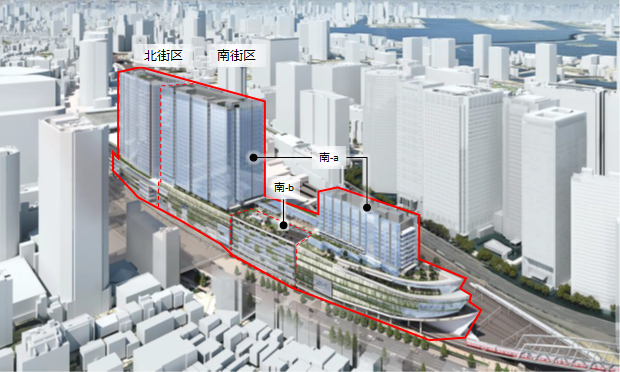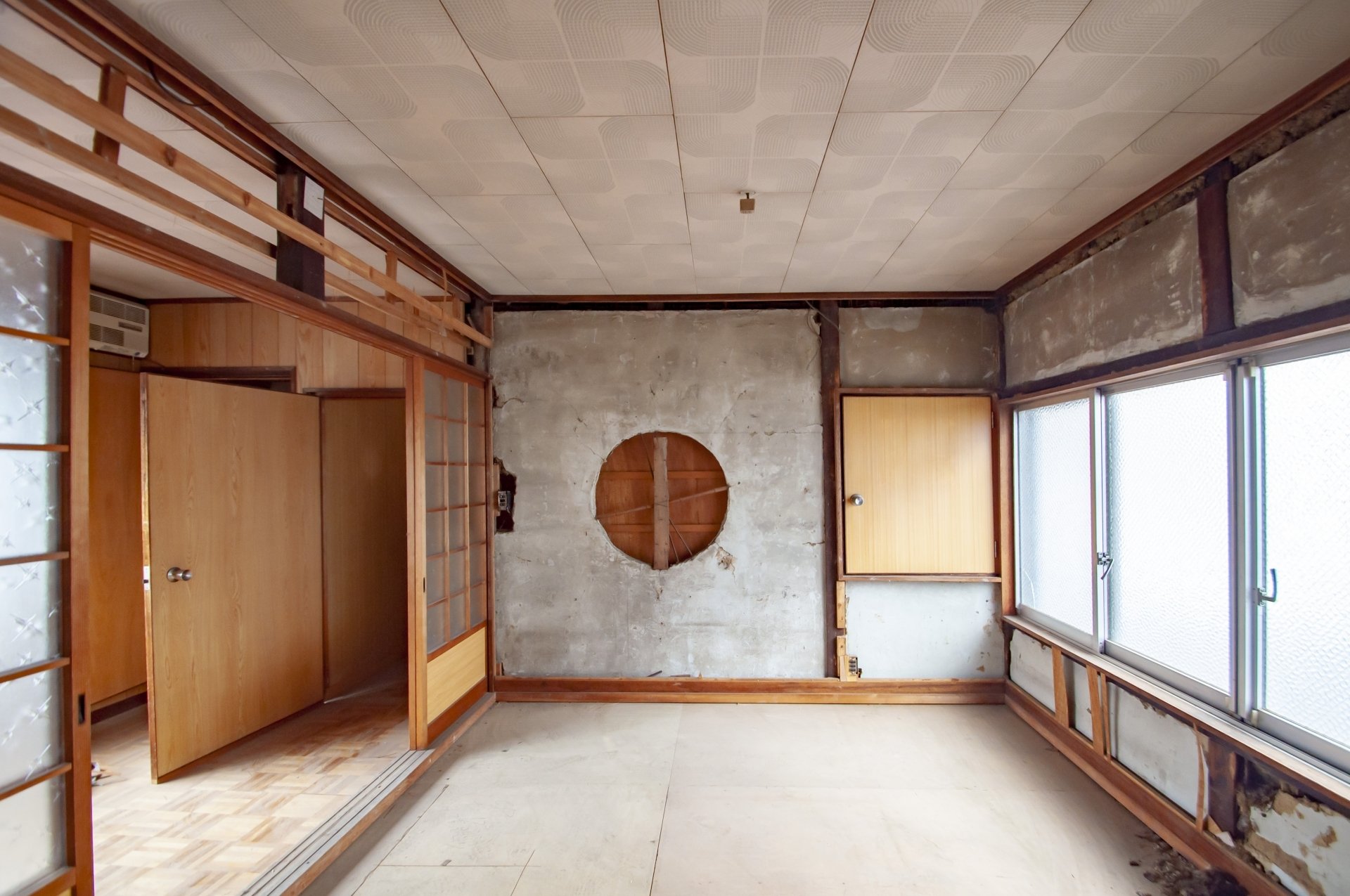In the world of real estate investment, family condominium investment is attracting attention as a new investment technique. This investment method, which is distinct from conventional real estate investment, is an innovative approach that takes advantage of owner-change properties and skillfully exploits the market gap that exists between investors and actual buyers.
We at INA & Associates, Inc. have proven the effectiveness of this investment approach through our years of experience in the real estate industry. In this article, we will explain in detail the basic concepts of family condominium investment, its specific profit structure, and successful examples so that investors can easily understand it.
Family condominium investment is more than just a real estate investment. It is a strategic investment approach that understands structural distortions in the market and converts them into profit opportunities. The most important feature of this investment method is that it takes advantage of the difference in interest rates between investment loans and mortgages, allowing you to target both income gains and capital gains.
By understanding this investment technique, investors can discover new income opportunities and build a more efficient portfolio. The following is a step-by-step explanation of the details of family condominium investment.
Basic Concept of Family Condominium Investment

What is an owner-change property?
Owner-change properties are investment properties that are bought and sold while they are still occupied by tenants. Unlike conventional vacant properties, the main feature of this type of property is that rental income can be earned at the same time it is purchased. While this property type is an asset that generates immediate income for investors, it is difficult for the average homebuyer to preview, which tends to suppress market prices.
In the market for owner-occupied properties, the limited number of buyers creates an imbalance between supply and demand, resulting in property prices often being set lower than the actual value. This phenomenon is the source of profit opportunities in family condominium investment.
Market Gap with Properties for Actual Demand
There is a structural duality in the condominium market. On the one hand, there is the owner-change property market for investors, and on the other hand, there is the vacant property market for actual demand buyers. These two markets have different price formation mechanisms for the same property.
In the owner-change property market, the use of investment loans is assumed. Investment loans generally have higher interest rates and are subject to stricter screening, limiting the number of investors who can purchase. As a result, demand tends to be lower than supply and property prices tend to be suppressed.
On the other hand, mortgages are available in the real property market. Compared to investment loans, mortgage loans offer significantly lower interest rates and relatively less stringent screening criteria, resulting in a larger population of potential buyers. Demand for home purchases is particularly strong among families, and demand continues to outstrip supply.
This market gap is the fundamental factor that creates profit opportunities for family condominium investments. Investors can acquire owner-change properties at low prices and sell them at high prices in the actual demand market after the tenants move out.
Overview of the Investment Scheme

Family condominium investment is a systematic investment approach consisting of the following five steps.
Step 1: Acquisition of owner-change properties
A rental property that already has tenants is purchased using an investment loan. At this stage, viewing of the property is restricted, making it possible to acquire the property at a lower price than the market price.
Step 2: Tenant occupancy period
Rental income can be secured immediately after purchase. During this period, stable income gains can be earned while covering loan repayments, management fees, and other expenses with rental income.
Step 3: Residents move out
After the tenant moves out, the condition of the property is checked in detail. Only at this stage can the internal condition of the property be assessed and plans for necessary repairs and renovations be made.
Step 4: Remodeling and repairs
Remodeling and repairs are carried out as necessary to increase the value of the property. This investment will increase the property's competitiveness in the actual demand market.
Step 5: Sell to actual demand buyers
Sell the property to a family who wishes to purchase it for their own residence. Since low interest rates on mortgages can be leveraged, the property can be sold at a higher price than the investor purchased it for.
Profitability Model Leveraging the Interest Rate Gap

The most important factor supporting the profitability of family condominium investments is the interest rate gap between the investment loan and the mortgage. This interest rate gap has a direct impact on the purchasing power of the buyer and is consequently reflected in the selling price of the property.
In the current interest rate environment, interest rates on investment loans are generally set at around 1.5% to 2.5%, while mortgage rates are much lower at around 0.5%. This 1.0% to 2.0% difference in interest rates creates a difference of approximately 45% in the amount that can be borrowed, even with the same monthly repayment amount.
| Terms | Investment Loan (2.5%) | Residential loan (0.5%) |
|---|---|---|
| Monthly repayment of 30 million yen borrowed (35 years) | Approx. 107,000 yen/month | Approx. 74,000 yen/month |
| Amount that can be borrowed at 100,000 yen/month | Approx. 28 million yen | Approx. 40.5 million yen |
| Difference in purchasing power | Approx. 12.5 million yen (approx. 45% increase) | |
This difference in purchasing power creates a price gap between the owner-change property market and the property market for actual demand, creating capital gain opportunities for investors. Since the interest rate gap is a permanent phenomenon rooted in the market structure, this income model is highly sustainable.
Three Attractive Features of Family Condominium Investment
W-Gain: Combination of income gain and capital gain

The most attractive feature of family condominium investment is the ability to simultaneously target both income gains and capital gains. This "W-Gain" structure allows investors to secure diversified income opportunities.
Income gains are realized through rental income from tenants. Due to the nature of owner-occupied properties, stable rental income can be generated upon purchase, and thus cash flow improvement can be expected from the initial stage of investment. This rental income serves to cover loan repayments and property maintenance costs, thereby reducing the investor's financial burden.
Capital gains, on the other hand, are realized after tenants move out. By selling the property in the actual market, the difference between the purchase price and the sale price can be secured as profit. The high purchasing power of actual demand buyers, who can take advantage of low interest rates on mortgage loans, makes it possible to realize a favorable selling price for investors.
This dual profit structure enables investors to enjoy both stable income during the holding period and large temporary profits at the time of sale, thereby maximizing investment efficiency.
Earnings Stability and Risk Diversification
In conventional real estate investment, vacancy risk has been one of the biggest concerns for investors. However, in family condominium investment, this vacancy risk is rather converted into a profit opportunity by strategically leveraging it.
Since owner-occupied properties already have tenants at the time of purchase, rental income can be secured immediately after the start of investment. This characteristic significantly improves the stability of income in the early stages of investment. In addition, since the occupancy history of tenants and actual rent payments can be confirmed in advance, the accuracy of revenue projections is also enhanced.
Furthermore, in family condominium investment, the point at which vacancies occur is used as the timing for sale. In conventional investment methods, vacancy is a loss factor, but this investment method turns a risk into an opportunity for profit by viewing vacancy as an opportunity to realize income.
This shift in thinking enables investors to realize more stable investment management while reducing the psychological burden of vacancy risk.
Comparison with Conventional Real Estate Investment
To better understand the advantages of family condominium investment, a comparison with conventional real estate investment methods is provided.
| Item | Conventional real estate investment | Family condominium investment |
|---|---|---|
| Acquisition Method | Purchase new or used properties | Purchase a property with tenants at a low cost |
| Initial Revenue | Need to recruit tenants | Rental income immediately after purchase |
| Main source of income | Rental income (income gain) | Rental income + profit on sale (W-gain) |
| Investment period | Long-term investment (5 years or more) | Medium- to short-term investment (1-3 years) |
| Vacancy risk | Loss Factor | Profit Opportunity |
| Sold to | For investors | For actual buyers |
| Selling price | Dependent on yield and building age | Low mortgage rate effect |
| Management burden | Ongoing management required | Ends with sale after move-out |
As this comparison chart clearly shows, family condominium investment solves the problems of conventional real estate investment and offers a more efficient and flexible investment approach. In particular, the concept of utilizing vacancies as income opportunities is an innovative approach that overturns the conventional wisdom of real estate investment.
Specific Investment Examples and Profit Structure
Investment case analysis of a family condominium investment 13 minutes from Ebisu Station
To understand the actual profitability of family condominium investment, we will analyze specific investment cases in detail. The first case study is located in Ebisu, Shibuya-ku, Tokyo.
Property Summary
- Address: Ebisu, Shibuya-ku, Tokyo
- Transportation: 13-minute walk from Ebisu Station on the JR Yamanote Line, 11-minute walk from Hiroo Station on the Tokyo Metro Hibiya Line, 12-minute walk from Shirokanedai Station on the Tokyo Metro Nanboku Line
- Building age: approx. 20 years old
- Floor Plan:1R
- Exclusive area: 40.14 square meters
The property was purchased for 39.8 million yen and sold for 55 million yen after 30 months of ownership. The total investment return was approximately 14.67 million yen, achieving an excellent annual return of approximately 18.4%.
| Item | Amount | Details |
|---|---|---|
| Purchase Price | 39.8 million yen | -3,980,000 yen |
| Sale Price | 55 million yen | -Miscellaneous expenses at the time of purchase |
| Miscellaneous expenses at time of purchase | 1,080,000 yen | Judicial scrivener's fee and brokerage fee |
| Earnings during holding period | 2,445,000 yen | Rental income 4,500,000 yen - Expenses 2,055,000 yen |
| Expenses at the time of sale | 1,900,000 yen | Judicial scrivener fees and brokerage fees |
| Remaining profit on sale | 14,670,000 yen | Annual rate of return: approx. 18.4 |
Investment Case Analysis of a condominium near Azabudai Hills
The second case study is a condominium located in Azabudai, Minato-ku, Tokyo. This case illustrates the profitability over a longer holding period.
Property Summary
- Address: Azabudai, Minato-ku, Tokyo
- Transportation: 13-minute walk from Azabu-juban Station on the Namboku Line, 6-minute walk from Kamiyacho Station on the Hibiya Line, 8-minute walk from Akabanebashi Station on the Oedo Line
- Structure: RC, 4 stories, 4 floors
- Age: Approx. 20 years old
- Floor plan: 1K
- Exclusive area: 29.33 square meters
The property was purchased for 25.4 million yen and sold for 33.5 million yen after 48 months of ownership. The total investment return was approximately 11.2 million yen, achieving an annual return of approximately 9.2%.
| Item | Amount | Details |
|---|---|---|
| Purchase Price | 25.4 million yen | -¥25,400,000 |
| Sale Price | 33.5 million yen | -Purchase price: 25.4 million yen |
| Miscellaneous expenses at time of purchase | 860,000 yen | Judicial scrivener's fee and brokerage fee |
| Earnings during holding period | 5,160,000 yen | Rental income 5,280,000 yen - Expenses 121,000 yen |
| Expenses at the time of sale | 1.2 million yen | Judicial scrivener fees and brokerage fees |
| Remaining profit on sale | 11.2 million yen | Annual rate of return: approx. 9.2 |
Investment Period and Yield Analysis
A comparison of the two cases provides important insights into the relationship between holding period and profitability.
| Item | Azabudai Condominium | Family condominium |
|---|---|---|
| Holding period | 30 months (2.5 years) | 48 months (4 years) |
| Annual Rate of Return | 18.4% (2.5 years) | 9.2% Annual Real Yield |
| Annual Real Yield | 3.8 | 4.3% Capital gain rate |
| Capital Gains Ratio | 38% Real annual return | 32% (32%) |
| Cumulative income gain | 2,445,000 yen | 5,160,000 yen |
This analysis shows that the annual rate of return tends to be higher when the holding period is shorter. This is because capital gains are realized in a short period of time. On the other hand, the long-term holding period shows that more stable returns can be secured due to the cumulative effect of income gains.
Key Points for Successful Investment
Property Selection Criteria
The most important factor for success in family condominium investment is proper property selection. In order to identify a profitable property, the following criteria must be comprehensively evaluated
Evaluation of location
The location of the property is the most important factor that directly affects the future sale price. In particular, it is necessary to carefully evaluate whether the location is attractive to families, who are the actual buyers of the property.
Convenience of transportation is judged comprehensively in terms of walking time from major stations, access to multiple train lines, and time required to get to the city center. Since families value convenience in commuting to work and school, these factors have a significant impact on price formation at the time of sale.
Regarding the living environment, we evaluate the quality of commercial facilities, medical institutions, and educational institutions in the surrounding area. Especially for the child-rearing generation, the proximity to daycare centers, kindergartens, and elementary schools, the presence of parks and green areas, and the level of public safety are important criteria.
Quality evaluation of buildings and facilities
The structure, age, and management status of the building directly affect the property's asset value and future maintenance costs. selecting a property with a durable structure such as RC or SRC construction can be expected to maintain the property value over the long term.
As for the age of the building, properties that are too old increase the risk of major repairs, while properties that are too new tend to have higher acquisition prices. Properties between 15 and 25 years old are considered a good balance between price and quality.
Importance of Market Analysis
In-depth market analysis is essential for successful family condominium investment. To improve the accuracy of your investment decisions, you need to analyze the market from the following perspectives
Understand market trends by area
Analyze in detail the real estate market trends in the area to be invested in. We investigate price trends over the past several years, changes in the number of transactions, and the status of new supply to evaluate the market's growth potential and stability.
Of particular importance is the analysis of the price difference between the owner-change property market and the property market for actual demand. The larger this price differential is in an area, the greater the profit opportunity for family condominium investment.
Demographics and Demand Projections
We analyze the demographics of the target area, changes in household composition, age structure, etc., to forecast future housing demand. Particularly in areas where the number of family households is expected to increase, demand for properties for actual demand is expected to remain strong.
Risk Management Methods
Proper risk management is the key to successful investment in family condominium investment as well. This section details the major risk factors and their countermeasures.
Managing the Risk of Extended Vacancy Period
Since it is difficult to predict when tenants will vacate, there is a risk that properties may need to be held longer than expected. To counter this risk, we will reduce the impact of vacancy risk in individual properties on the overall portfolio by diversifying investments in multiple properties.
Risk Management of Repair and Renovation Expenses
Repair and renovation costs prior to sale are an important factor that directly affects investment returns. Detailed property surveys at the time of purchase are essential to managing this risk.
Measures against market fluctuation risk
Conservative revenue projections and flexible sales strategies are important to address the risk of not realizing the anticipated sales price due to fluctuations in the real estate market.
How to develop an exit strategy
The development of a clear exit strategy is essential to the success of a family condominium investment. It is important to chart a course from the start of the investment to the sale of the property and adjust the strategy according to the situation.
Criteria for Determining the Right Timing of Sale
In order to determine the optimal timing of sale, it is necessary to comprehensively evaluate market conditions, property conditions, and the degree to which investment goals have been achieved.
Strategies for Setting the Sale Price
Setting the sale price is an important decision that will affect investment returns. We will set an appropriate price after thoroughly researching market conditions and clarifying factors that differentiate the property from competing properties.
Conclusion
Summary of the main points of family condominium investment
This article has provided a detailed explanation of the overall picture of family condominium investment and specific investment techniques. Here, we summarize the important points.
Innovative Investment Approach
Family condominium investment is an innovative approach that overturns the conventional wisdom of real estate investment. It takes advantage of the structural price difference between the owner-change property market and the real estate market to create lucrative income opportunities for investors. This approach makes it possible to realistically pursue the investment ideal of "buy low and sell high.
Advantages of the W-Gain Structure
The W-Gain Structure, which allows for both income and capital gains, maximizes investment efficiency. During the holding period, stable rental income can be secured, and at the time of sale, profits can be earned through substantial price increases. This dual income structure allows investors to enjoy diversified income opportunities.
Leveraging the Interest Rate Gap
The interest rate gap between investment loans and mortgages is a fundamental factor in the profitability of this investment approach. In the current interest rate environment, an interest rate gap of approximately 1.0 to 2.0% exists, which directly translates into increased purchasing power for actual purchasers and a premium on the sale price. This structural advantage is a sustainable source of income rooted in the market environment.
Key Investment Decision Points
We recommend that investors considering investing in family condominiums make investment decisions by focusing on the following points.
Understanding the market environment
It is important to comprehensively analyze market trends, demographics, development plans, and other factors in the investment target area to predict future demand trends. In areas where demand for family housing is particularly strong, stable sales opportunities can be expected.
Accuracy of property selection
The key to success is the selection of highly profitable properties based on a multifaceted evaluation of location, building quality, leasing conditions, and other factors. It is necessary to carefully determine whether the property has characteristics that are attractive to actual demand buyers.
Adequacy of financial planning
It is important to accurately calculate the funds required for the investment and the expected return, and set the investment size according to the risk tolerance. It is also necessary to ensure that there is sufficient financial capacity in case of unexpected expenses or an extension of the holding period.
Next Action Proposed
For investors interested in family condominium investment, we recommend starting with information gathering and market research. Gather basic information such as market trends, property information, and transaction examples in the investment target area, and formulate a concrete investment plan through consultation with experts.
We at INA&Associates K.K. support the success of our investors with our extensive experience and expertise in family condominium investment. If you would like to discuss your investment needs or would like more detailed information, please do not hesitate to contact us.
Frequently Asked Questions
Q1: Can a beginner in real estate investment start family condominium investment?
Family condominium investment can be started by beginners with proper knowledge and preparation. However, real estate investment involves certain risks, so prior learning and professional support are important. First, acquire basic knowledge of real estate investment and deepen your understanding of market trends and investment techniques. Then, we recommend that you consult with a trusted real estate company or investment advisor to develop an individualized investment plan.
Q2: What is the minimum investment amount for family condominium investment?
The minimum investment amount varies widely depending on the investment area and type of property. Properties in central Tokyo often require an investment of 30 million yen or more, while some properties in suburban areas can be invested in the 10 million yen range. What is important is not the absolute investment amount, but the appropriate investment size according to the investor's financial resources and risk tolerance. Generally speaking, it is recommended that the investor prepare personal funds of about 20-30% of the property price and finance the remainder with an investment loan.
Q3: Are there no vacancy risks with owner-change properties?
A: No. Owner-change properties have tenants at the time of purchase, so vacancy risk can be avoided immediately after the investment begins. However, there is always the possibility that tenants will move out in the future. In family condominium investment, this vacancy is strategically utilized as an opportunity to realize income. When a property becomes vacant due to tenants moving out, it can be sold in the actual demand market to earn capital gains. In other words, vacancy is not a loss factor, but is positioned as part of the investment strategy.
Q4: How should we set the criteria for determining when to sell?
The decision on when to sell should be based on a comprehensive evaluation of multiple factors. The main criteria include the timing of tenants moving out, the market environment (real estate price trends, interest rate environment, economic conditions), the condition of the property (building deterioration, timing of major repairs), and the degree to which investment goals have been achieved. Periods of low mortgage interest rates are particularly suitable for selling, and it is important to evaluate these factors on a regular basis to determine the optimal timing for selling.
Q5: What are the characteristics of properties suitable for family condominium investment?
Properties suitable for family condominium investment should have features that are attractive to families, the actual buyers. In terms of location, it is important to be within walking distance from a major station, to have access to multiple train lines, and to have good access to the city center. In terms of layout and area, a floor plan that meets the needs of families (2LDK or more) and sufficient living space (50 square meters or more) are desirable. In terms of building quality, a durable structure such as RC or SRC construction and appropriate building age (approximately 15-25 years old) are highly valued. Also important are the surrounding environment, such as the availability of educational facilities, the presence of parks and green areas, and the safety of the area.

Daisuke Inazawa
Representative Director of INA&Associates Inc. Based in Osaka, Tokyo, and Kanagawa, he is engaged in real estate sales, leasing, and management. He provides services based on his extensive experience in the real estate industry. Based on the philosophy that “human resources are a company's most important asset,” he places great importance on human resource development. He continues to take on the challenge of creating sustainable corporate value.

.png)
